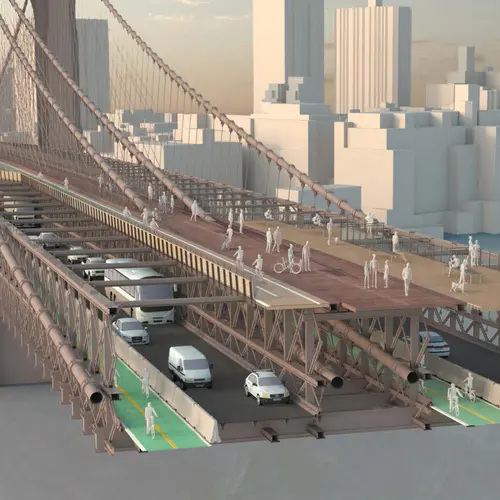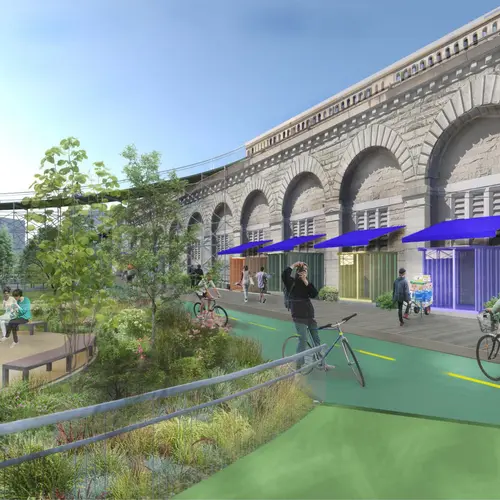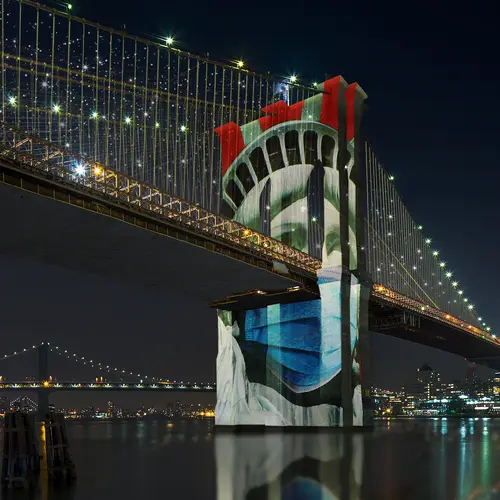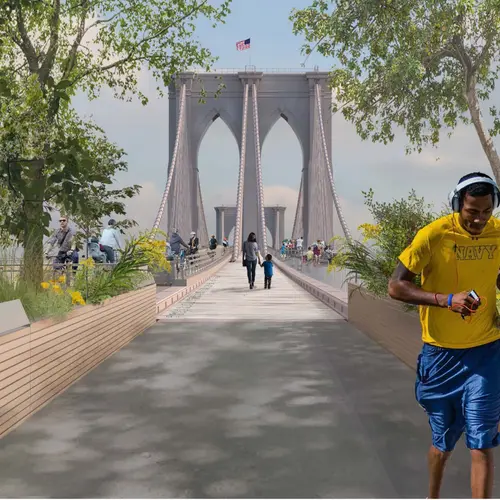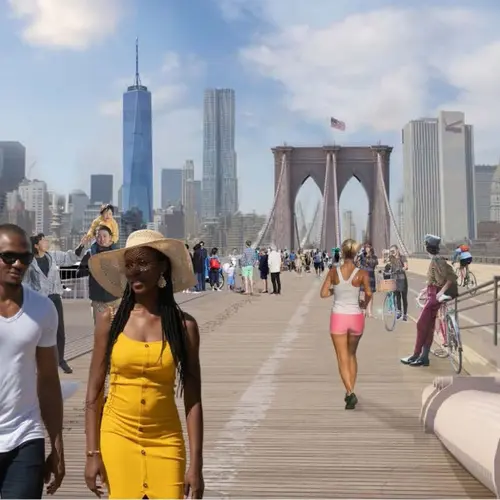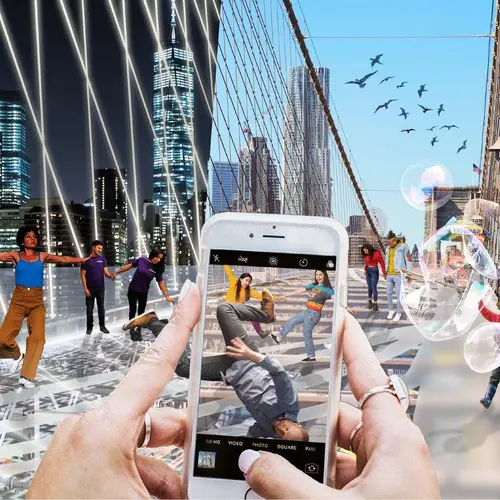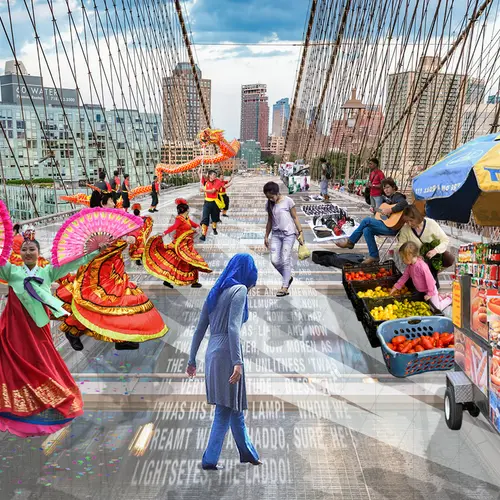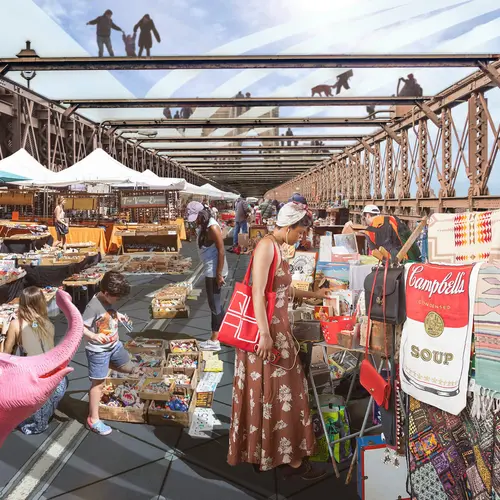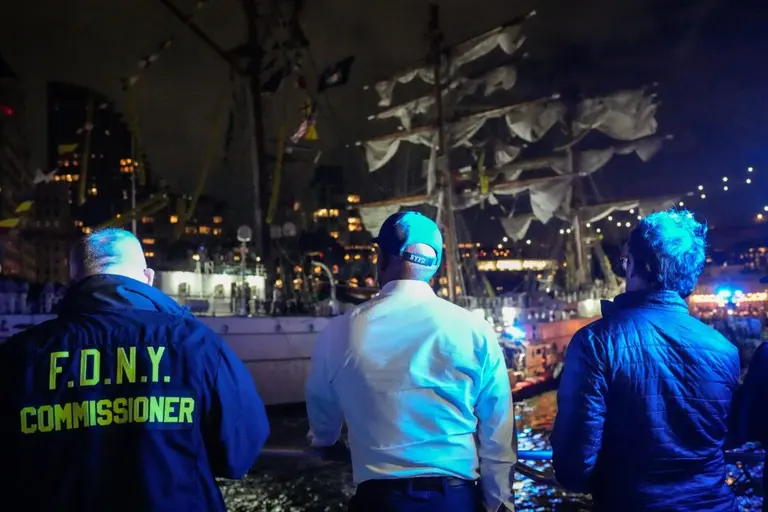Winning design proposal brings better mobility and biodiverse ‘microforests’ to the Brooklyn Bridge
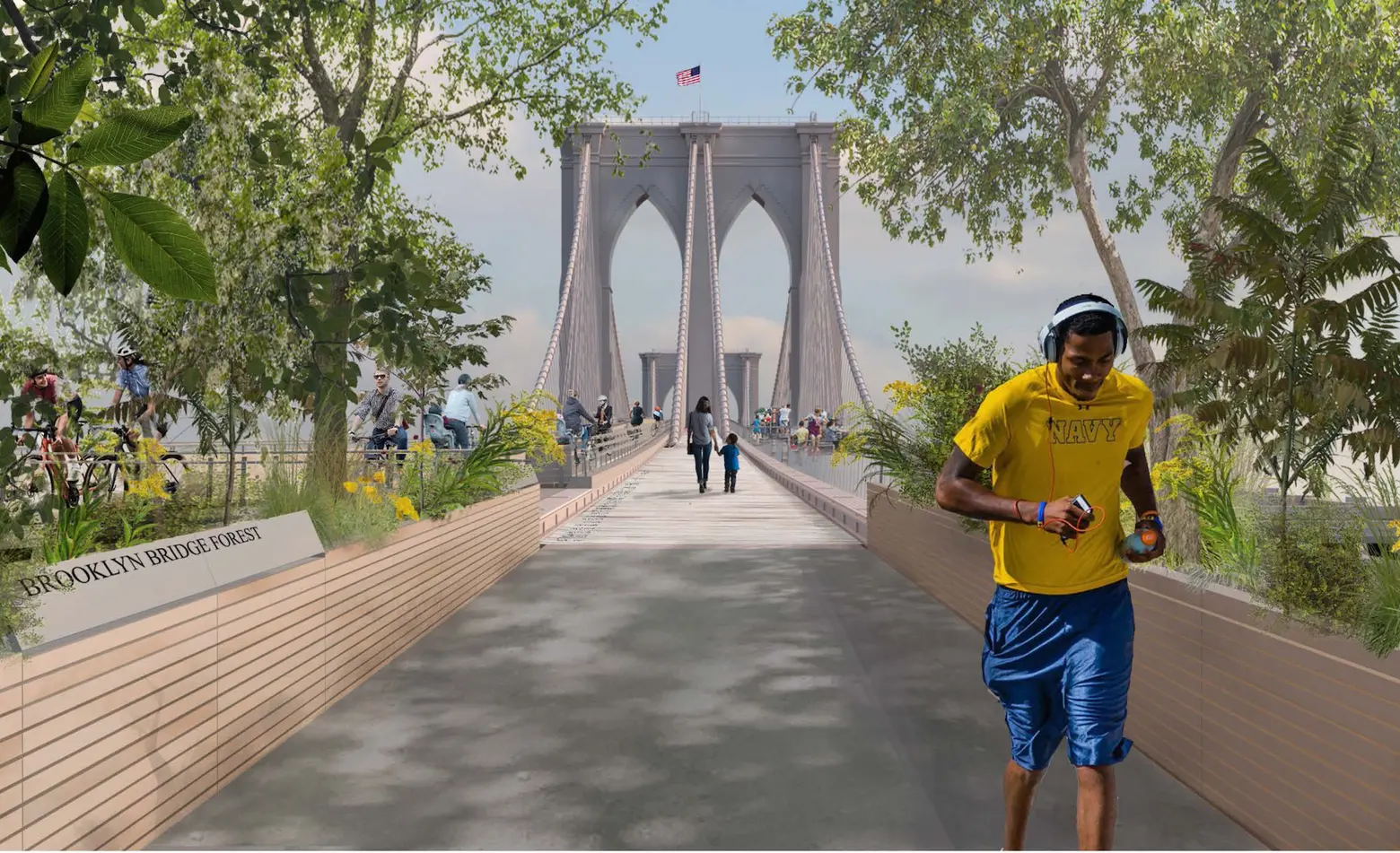
“Brooklyn Bridge Forest,” Pilot Projects Design Collective, Cities4Forests, Wildlife Conservation Society, Grimshaw and Silman, New York and Montreal
Two proposals have been chosen as the winners of a design contest launched earlier this year that sought ways to improve pedestrian space on the crowded Brooklyn Bridge. The Van Alen Institute and the New York City Council on Monday announced that “Brooklyn Bridge Forest,” a design that calls for lots of green space and an expanded wooden walkway, won the professional category. And “Do Look Down,” which would add a glass surface above the girders and make space for community events and vendors, took the top prize in the young adult category.
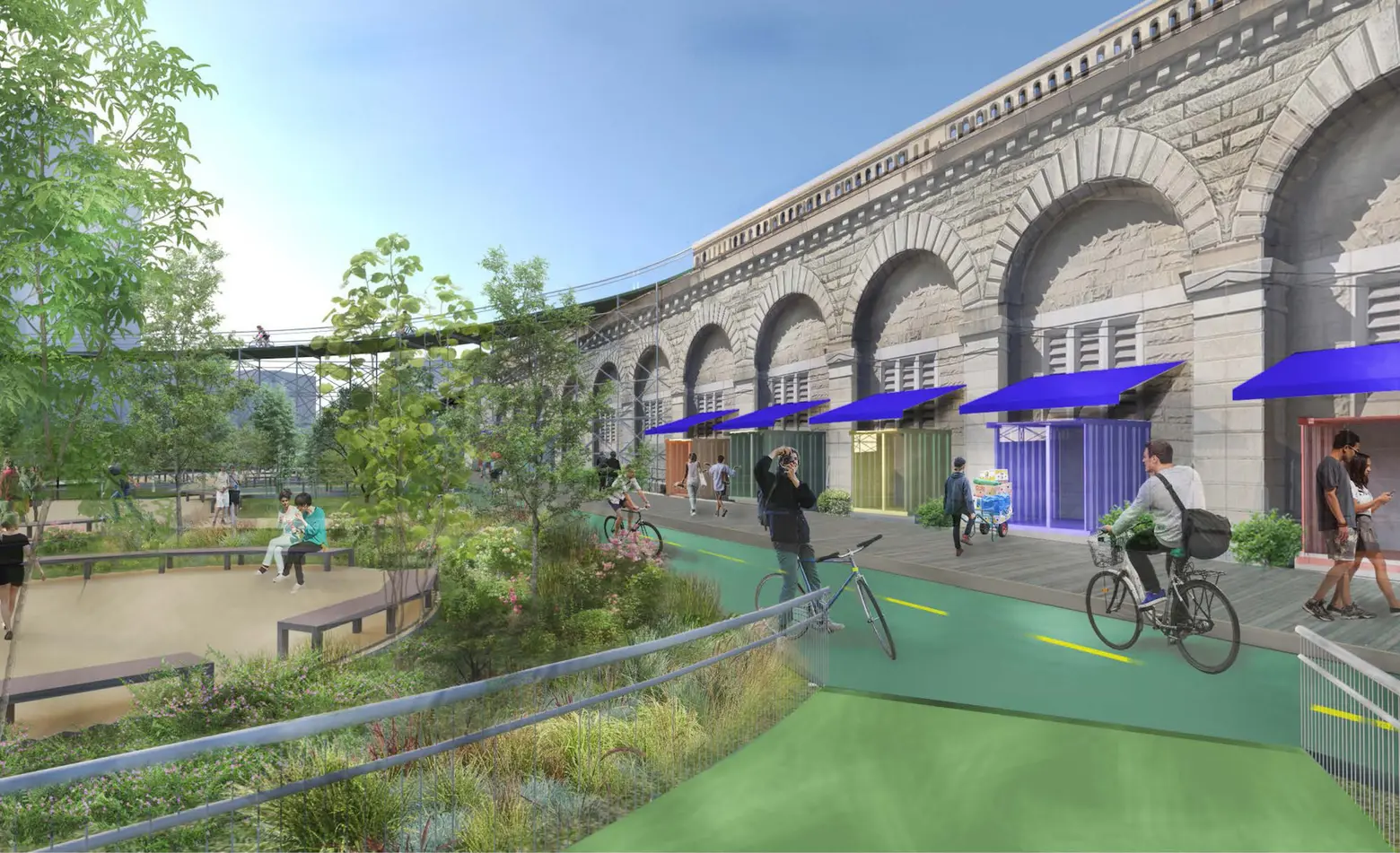
Micro-forest brings biodiversity to urban residents and provide gathering places near new bike ramp. “Brooklyn Bridge Forest,” Pilot Projects Design Collective, Cities4Forests, Wildlife Conservation Society, Grimshaw and Silman, New York and Montreal
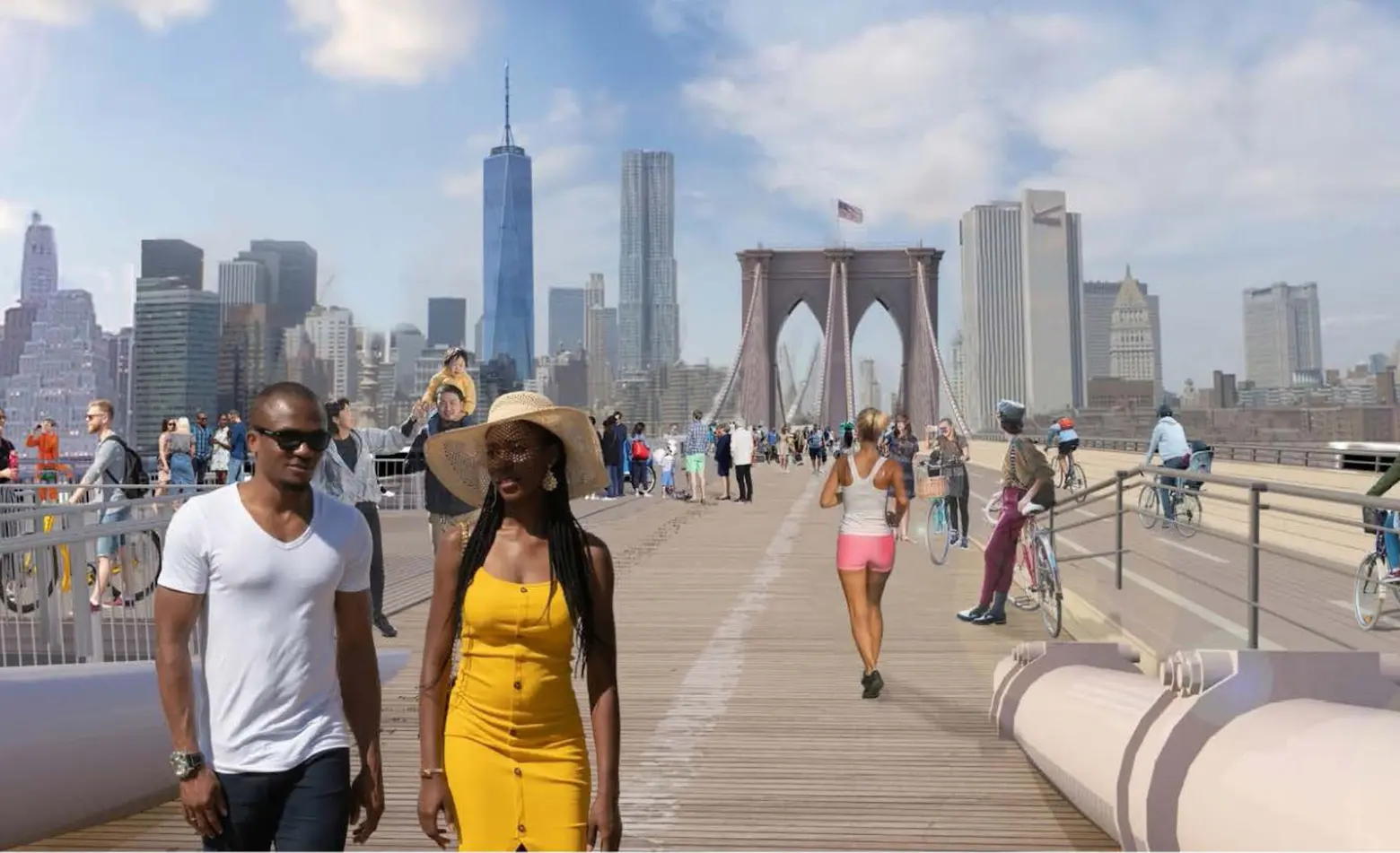
New central plaza gives high-quality public space. “Brooklyn Bridge Forest,” Pilot Projects Design Collective, Cities4Forests, Wildlife Conservation Society, Grimshaw and Silman, New York and Montreal
The “Reimagining Brooklyn Bridge” contest sought proposals that “balance the needs of the bridge’s many users, honor the bridge’s place among New York’s treasured landmarks, and inspire civic design in our city for generations to come,” according to the design brief. The Van Alen Institute said it received more than 200 submissions from 37 countries.
“The winning ideas inspire us to think differently about the city’s infrastructure,” City Council Speaker Corey Johnson said. “They are a crucial first step to get New Yorkers thinking about how to adapt not only the bridge but also our streets and public spaces for future generations and stay true to our goal of creating an environmentally sensitive, bike-friendly city that prioritizes pedestrians over cars.”
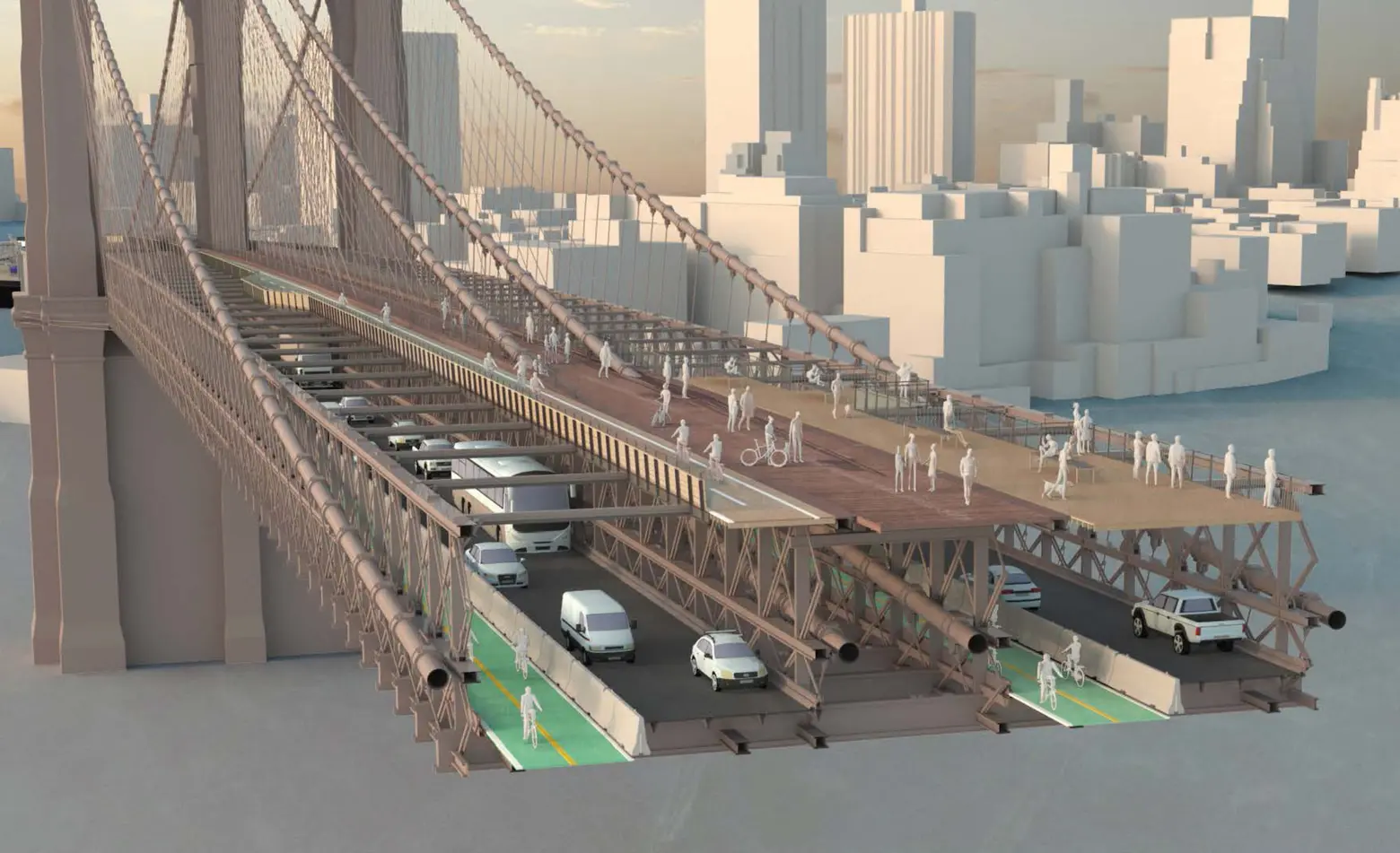
Scott Francisco and Pilot Projects Design Collective’s proposal sees the landmark as an “icon of climate action and social equity.” The group suggests expanding the historic walkway by using planks sourced from a forest in Guatemala, helping to preserve the rainforest.
Pedestrian space would be tripled by reclaiming lanes from cars and adding a new dedicated bike path. Biodiverse “micro forests” would be planted on both ends of the bridge, inviting all New Yorkers to enjoy nature.
“We are energized by this victory for healthier cities and the global environment,” Francisco, who led the “Brooklyn Bridge Forest” team, said in a statement. “Brooklyn Bridge Forest seeks to build a new vision of environmental sustainability and social equity — reimagining this beloved landmark as a way to connect New York City and its residents to forests and natural systems that sustain life for all.”

“Do Look Down,” Shannon Hui, Kwans Kim, and Yujin Kim; Hong Kong, Bay Area, CA, and New York
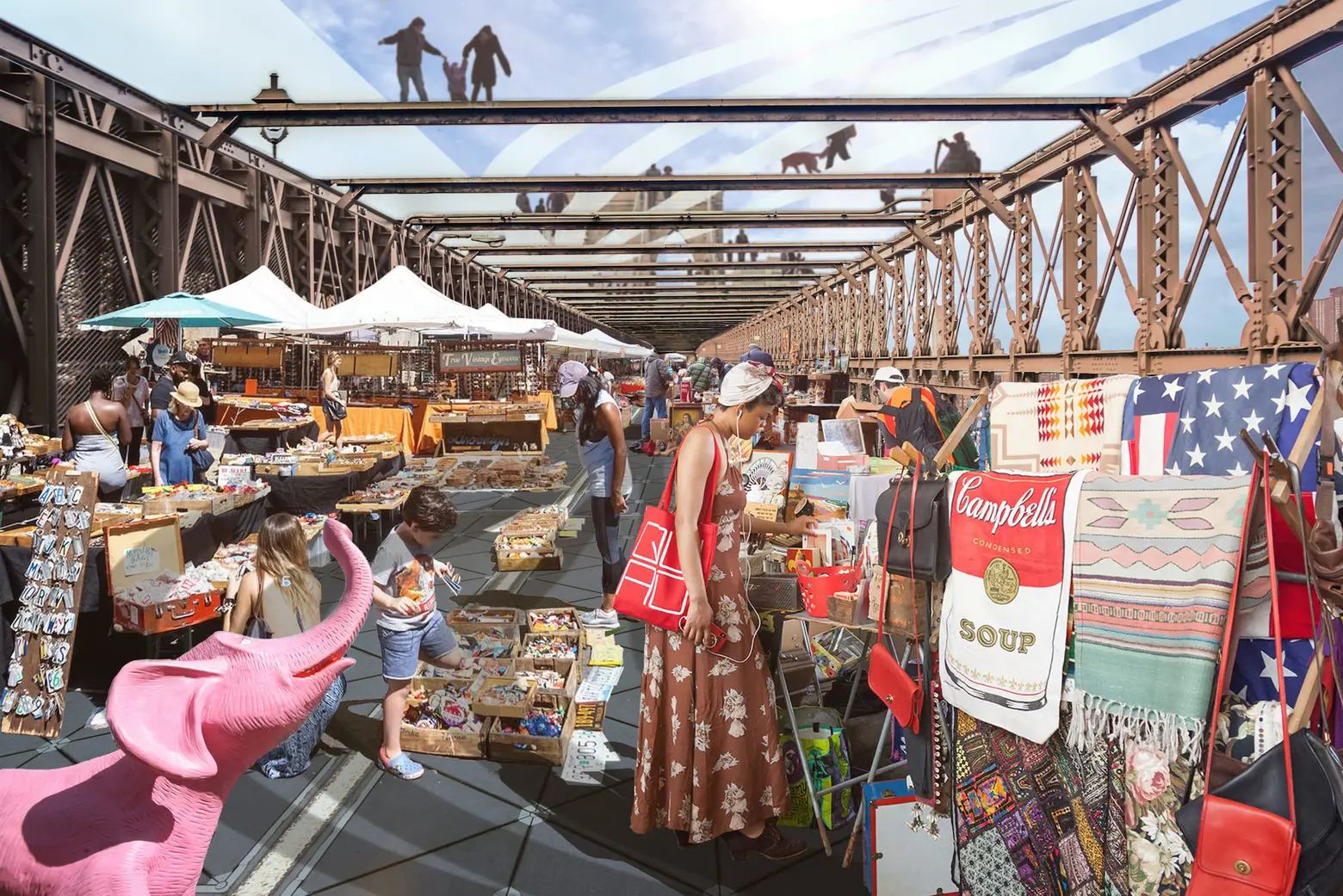
“Do Look Down,” Shannon Hui, Kwans Kim, and Yujin Kim; Hong Kong, Bay Area, CA, and New York
The colorful proposal “Do Look Down” from Shannon Hui, Kwans Kim, and Yujin Kim, adds a glass surface to the girders, allowing for new uses for the community on the space, including cultural performances, art installations, and space for vendors. The proposal calls for reclaiming the roadway as the new home for the Brooklyn Bridge Flea Market.
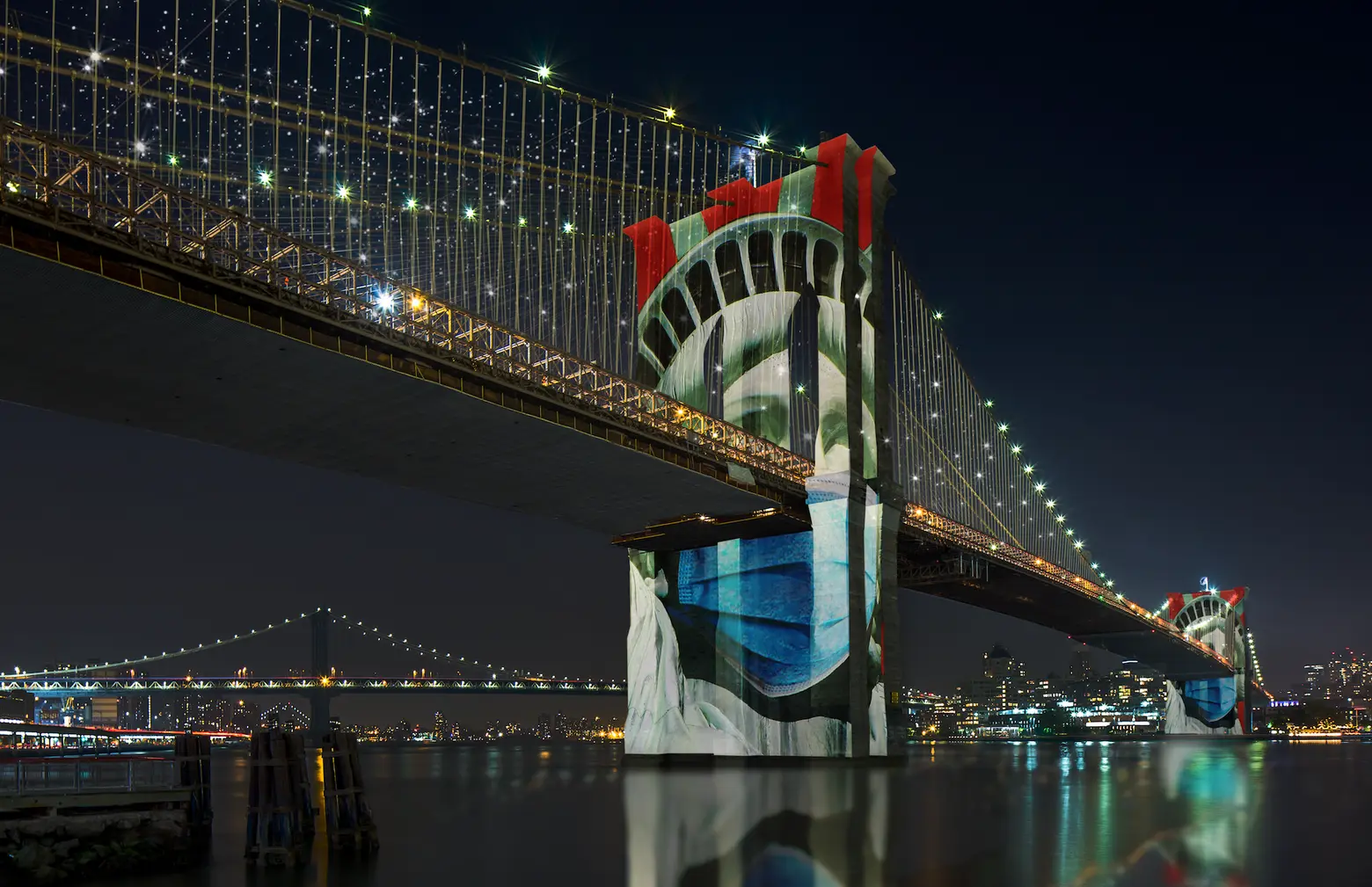
“Do Look Down,” Shannon Hui, Kwans Kim, and Yujin Kim; Hong Kong, Bay Area, CA, and New York
“Do Look Down” would utilize a kinetic paving system to powerLED displays and projections that would show images related to the city’s history. Plus, the proposal suggests projecting images “of civil and cultural importance” onto the towers of the bridge.
“It’s been an incredible experience taking part in the Reimagining Brooklyn Bridge competition, a challenge originally addressing overcrowding that quickly became about so much more,” Hui said. “This health crisis, in addition to its intersections with racial and queer injustice, has violently amplified the systemic inequities built into New York’s existing urban infrastructure, and for designers and developers to continue to operate within a vacuum would be to take advantage of a position of immense privilege.”
The winners were selected after a virtual “Design Showdown” on July 23 and a public online vote that closed on July 30.
RELATED:
- See the design proposals that would make the Brooklyn Bridge a pedestrian oasis
- City launches design competition to fix Brooklyn Bridge congestion problem
All renderings courtesy of the Van Alen Institute
